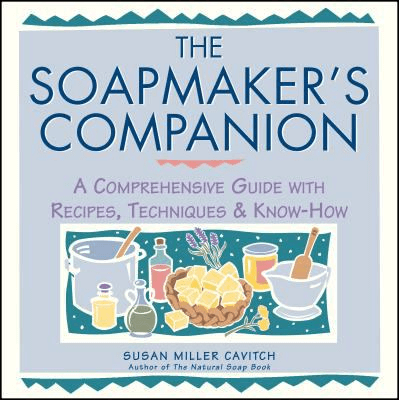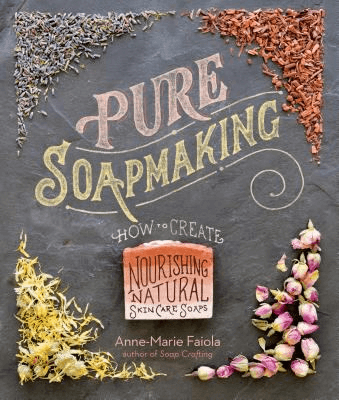As you may have noticed, the library has a new website and along with it a new platform for our blogs. I thought it would be fitting for my first post on the new site to be all about soap making to celebrate our clean slate. Back in January I mentioned in a post that I had a couple New Year’s Resolutions:
- Yelling at my kids less (A moderate success — I am currently trying to be more present when I am with them);
- Cooking new things (Sadly, a failure … several attempts have been made but I mostly find myself falling back into my same old patterns);
- Getting back to being crafty and making soap — a total success! I had gotten away from making soap, but really missed the art and the science of it. In general I missed doing crafty things, and really wanted to get back into it. So far this winter and spring I have made over 15 batches of soap. At approximately 8 bars a batch, let’s just say my resolution was a success and that my family is very, very clean right now.
A few years ago, a totally rad co-worker (if anyone ever actually embodied that phrase it would be her) told me all about her soap making enterprise. I had been talking about various skin conditions troubling my family (I sound like a real fun time at parties, right?) and she promised me that hand-made soap was the answer. I was totally skeptical at first — I mean, what could soap made in some basement have that hundreds of soaps chemically created in a lab for my kid’s skin conditions didn’t?
Well it turns out not a lot, and that was the point. It didn’t have the chemicals; what it did have was basic, organic ingredients that have been used for centuries. I know this sounds a little crunchy right now, but stick with me.
At first I was just using this new handmade soap, but then, with lots of cheer leading from my co-worker, I got the idea into my head to try and make soap myself. Here is the thing, soap making isn’t for the weak of heart. It involves working with a dangerous chemical agent — sodium hydroxide, also known as lye — that causes a chemical reaction called saponification. The scary part is that lye eats away organic material (it’s the stuff bad guys use in TV shows to rid themselves of pesky bodies). Regardless of how it comes into contact with your skin, it causes the same type of damage.
You have to be very aware of what you are doing (I am typically a space cadet), there is a science to it (I was terrible at chemistry, especially chem lab) and you have to be careful. Of course you can go to the store and buy melt and pour kits…meaning you have a pre-made soap base kit that you melt and then add scents, exfoliates and colors to it. I tried this method first and liked it, but I was still itching to try soap-making from scratch.
It took awhile to get the stuff together, because you need lots of kitchen hardware that, once used for soap-making, can not be used for food preparation, or anything else really. My first batch of soap was made with goat milk and was a huge success. I was hooked, and I began reading any material I could get my hands on about soap-making. The library was a huge help in this endeavor, since many of the books are older and hard to find at your local big box book store. I also found a lot of websites that were super helpful including one of my favorites, The Nerdy Farm Wife.

Some of my favorites include Susan Miller Cavitch’s Soapmaker’s Companion. Miller-Cavitch has a series of books. They are older, but they offer a lot of very good advice on techniques and know-how, though some of her book can be a little tedious. It was written before most people were using the internet and gives information on how to call around looking for wholesale supply companies specializing in ingredients you need, something that is much easier accomplished today thanks to Google. This, along with her first book, The Natural Soap Book, helped me learn a lot of the background and basics of soap making before I ever picked up a spatula or put on my protective eye-wear.

Anne-Marie Faiola, aka The Soap Queen, is a widely popular blogger and business owner. Her empire is one you will probably come into contact with at some point if you decide to dip your feet into the bubble bath of soap making, especially since she has done all the footwork and put the supplies in one place for you. Her books, blog and recipes are great fun. Failoa has been making soap since she was a teenager and has a truly artistic approach that is highlighted in Pure Soapmaking. Many of the techniques and recipes in this book are far above my skill level, but I have been able to incorporate new ideas into my own recipes and tried things I never would have done otherwise. Pure Soapmaking also contains early chapters that cover the basics of soap making and the property of oils, something you need to know. If you aren’t sure about soap making or think it might be too science-heavy, check this book out for artistic inspiration.

Dr. Robert and Katherine McDaniel’s Soap Maker’s Workshop gives a great deal of background on soap making and covers a good amount of the scientific information. Out of all the books I have devoured on soap making, I think I enjoyed reading this one the most. Most of the others were either older and contained out-dated resource information you had to wade through to get to the meatier parts OR they were more like recipe books with little how-to information. The Soap Maker’s Workshop focused mostly on the science and techniques of soap making and gave me interesting information that got me interested in the history of soap and the history of the techniques.
If you have ever wondered about the soap you use, or if you have pesky skin issues, or if you are interested in quality handmade items, or if you just really loved chemistry lab but don’t want to be the next Walter White, you should try your hand at soap-making. The library has a bevy of resources for you to check out, and around the system there have even been soap-making classes for adults and teens. Check out our crafting section for all your soap-making needs, or for lots of other craft ideas if you aren’t up to soap making just yet!
-Natalie
Get Soapy!
Check out Pure SoapmakingNatalie is a Children’s Library Assistant at CLP – Sheraden, and really only got the job so she could enjoy the perks (did yinz know about the free books?). Brevity is not her strong suit, so unless you want to waste your lunch hour, stay clear of her.

